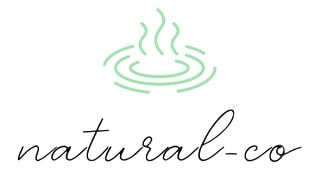Senior Wellness Economy 2025 — How Aging Populations Are Redefining Global Wellness and Hot Spring Tourism
The world is entering the age of longevity. By 2030, one in six people will be over 60 — and their influence on the global wellness industry is profound. What began as a niche “senior travel” segment has evolved into a multi-trillion-dollar ecosystem spanning healthcare, tourism, and lifestyle innovation.
The Senior Wellness Economy is no longer about aging gracefully — it’s about living actively, traveling longer, and spending consciously.
1. Global Overview: The Silver Economy’s Scale and Impact
According to the World Health Organization and OECD, global spending by adults over 55 is projected to reach $15 trillion by 2035.
Within that, wellness tourism, medical retreats, and long-stay spa residencies make up a rapidly growing share.
| Region | Share of Global 55+ Spending (2025 est.) | Core Wellness Focus |
|---|---|---|
| Asia-Pacific | 37% | Preventive health, hot spring therapy, longevity diets |
| Europe | 29% | Spa heritage, medical wellness, thermal resorts |
| North America | 21% | Active retirement, eco-wellness real estate |
| Middle East & Others | 13% | Premium health tourism, destination spas |
This demographic shift is turning the wellness industry into one of the most resilient sectors — insulated from short-term trends, yet deeply influenced by technology and sustainability.
2. From Health Tourism to “Wellness Living”
Older travelers aren’t looking for one-time spa visits. They’re looking for extended wellness lifestyles — places where healthcare, recreation, and environment intersect.
The result? A new generation of business models:
-
Wellness Residences — hybrid communities where seniors live part-time and receive integrated spa + healthcare services.
-
Thermal Villages — long-stay resorts built around geothermal springs, offering personalized therapy and nutrition programs.
-
Mobile Wellness Travel — curated journeys that combine preventive care, cultural immersion, and restorative environments.
Aging travelers aren’t slowing down. They’re redesigning how wellness destinations operate.
3. Behavioral Shifts Among Senior Consumers
| Motivation | Description | Example |
|---|---|---|
| Health Security | Preventive therapies and stress management | Thermal spa programs in Japan and Iceland |
| Connection & Meaning | Group wellness activities and cultural experiences | Intergenerational travel programs |
| Environmental Awareness | Preference for eco-certified, low-impact resorts | Geothermal and zero-waste facilities |
| Digital Convenience | Smooth booking, telehealth, wearable integration | AI-enabled spa booking systems |
Seniors are digitally literate, financially stable, and experience-driven. This combination is pushing wellness operators to modernize without losing authenticity.
4. Market Growth Signals (2024–2030)
| Sector | 2024 Market Value (USD Bn) | 2030 Forecast | CAGR | Key Driver |
|---|---|---|---|---|
| Hot Spring & Thermal Spa Tourism | 60 | 92 | +7.4% | Aging demographics & health consciousness |
| Senior Wellness Residences | 35 | 58 | +8.6% | Hybrid tourism & long-stay models |
| Medical-Wellness Retreats | 72 | 120 | +9.1% | Preventive healthcare integration |
| Eco-Wellness Travel | 45 | 70 | +6.8% | Sustainability & nature-based healing |
The intersection of health, sustainability, and technology is defining the next wave of growth.
5. Case Studies: Where Innovation Meets Tradition
Japan’s Onsen Evolution
Japan’s traditional hot spring (onsen) resorts are adapting to senior needs through digital booking, ergonomic design, and AI health monitoring — combining cultural authenticity with modern care.
Europe’s Thermal Renaissance
Austria, Hungary, and Italy are reviving classic thermal towns through smart eco-renovations, turning 19th-century spas into data-powered wellness hubs.
Thailand’s Longevity Tourism
Thailand’s medical-wellness resorts now target semi-retired foreign residents with all-inclusive “stay and heal” packages that merge tourism, healthcare, and community.
6. Key Opportunities for Investors and Operators
-
Design for Accessibility Without Losing Aesthetics
Functional doesn’t have to mean clinical. Combine comfort with design harmony. -
Build Long-Term Engagement, Not One-Time Visits
Membership and subscription-based wellness programs encourage recurring revenue. -
Leverage Data Responsibly
AI can enhance experience — but privacy and personalization must balance. -
Integrate Preventive Healthcare Partnerships
Collaboration between medical providers and spa operators can create new hybrid models. -
Focus on Purpose-Driven Branding
Transparency, sustainability, and community impact are the new luxury.
7. The Role of Natural-Co Tools
The Natural-Co AI Tool Suite helps hot spring and wellness operators:
-
Track regional senior demand using demographic analytics
-
Analyze competitor positioning and service pricing
-
Forecast occupancy and growth trends across markets
-
Simulate new business model scenarios for financial sustainability
With the right insights, aging isn’t a challenge — it’s a growth engine.
8. Outlook: Aging as a Catalyst for Innovation
The Senior Wellness Economy is transforming how we define health, travel, and longevity.
It’s creating spaces where care meets creativity — where aging populations inspire smarter, kinder, and greener business practices.
The question is no longer how to serve senior travelers — it’s how to grow with them.

